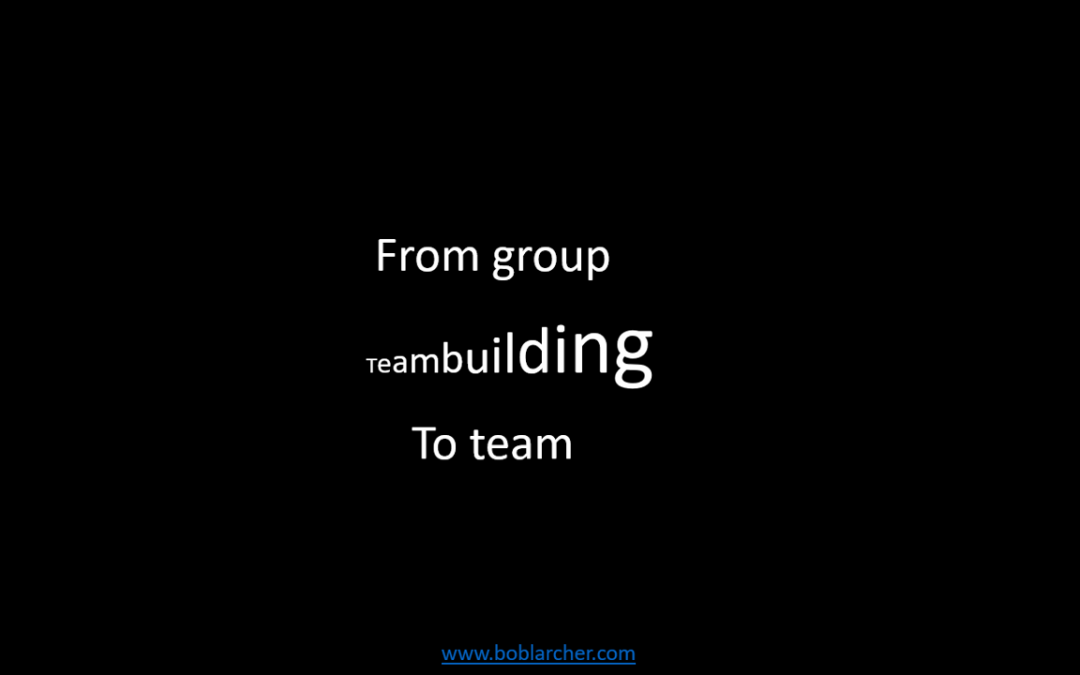If you went to the emergency hospital with a broken arm and blood oozing through the sling and the consultant said, “before we look at your arm, I’d like you to watch this motivational video or play this game”, you would be surprised, I imagine.
If you asked the consultant how long it would take for the arm to mend and the consultant said, “difficult to say, I will need to X-ray it and analyse the problem”, you wouldn’t be surprised, I imagine.
Interestingly, when, as a consultant, I am asked, “what will we do in our team building session” and I reply, “you will work on the pain points that you need to cure to be more effective & efficient”, the reply is usually “can we build something together?” or “cook something together?”.
When asked, again as a consultant, “how long do you think the team building process will take?” and I reply, “difficult to say, I’ll need to talk to team members and analyse how the team is currently functioning before I can propose a course of action”, the reply is usually one of surprise.
Don’t get me wrong, I’m not against “activities”; I use them all the time, but I select them once I have understood the issues and I select activities that I can link to the team’s issues.
I cut my teeth on team building with senior teams in the mid-eighties, doing some very “edge of the seat” T-Group type stuff; working with teams that I had never met before and identifying & helping them to solve their issues in real-time. Although this approach was very effective and quite “exciting” as a facilitator, it cost me a lot on the energy front – I left events on an emotional high but, I also left, completely drained of energy.
My approach today is somewhat more structured & disciplined, without being rigid & dogmatic.
There is still plenty of space for the unexpected and time for some “fun activities” – although I consider that everything I do with teams is “enjoyable”.
When deciding to help a team in its development, I work “globally” through six steps:
Step 1 is an analysis of how the team is currently functioning, with the objective of finding the handful of real “pain points” that need to be cured to allow the team to move forward.
I never rely just on the team leader’s view; I interview all team members and often use some kind of “scoring” questionnaire to get a more objective view with questions like: “is there a high level of trust within the team”, “is leadership shared within the team”, “does the team have clear performance objectives” – a mix of task-oriented and process-oriented questions.
Step 2 is my analysis of step 1; finding common themes and issues that I feel that the team needs to address in order to become effective and/or efficient.
Step 3 is a validation meeting with the team to confirm, and get agreement, that these are the key issues to be solved. I require the “buy-in” of the team members that they are willing to work on and address “their” issues; my role is to help them solve their issues, not solve their issues for them – the issues are theirs, not mine.
Step 4 is the putting together of a “programme” of interventions, activities, workshops, etc., that will address the chosen issues – undoubtedly with a few “whistles and bells”.
This doesn’t mean “starting with a blank sheet”; even though every senior team is different, they all have common or similar issues and I have blocks or sessions that can be tailored to fit most teams.
Step 5 is running the programme, probably the most “visible” part of the overall process; facilitating, presenting models, debriefing, deciding what to do with the unexpected – there is always something unexpected.
Not all the pain points can necessarily be “cured”; however, the key to step 5 is ensuring that realistic & applicable actions are defined to enable the team to “treat” the issues in the short to medium term – this means some kind of roadmap or blueprint with concrete deliverables (with dates and such like) that are accepted and agreed upon by all team members
Step 6 is the periodic follow-up of the roadmap. My approach is that it is up to the team members to apply the teams’ actions; however, an “external prod” is often helpful.
I have found that this approach, delivers results and, strangely, its not the whistles and bells that are retained. I still meet with people from teams that I helped many years ago and they talk about “the feedback session” or “the discussion around trust” – not about the go-kart race or the wine tasting.
I have been passionate about helping “collections of individuals” to function as what I call E2 (Effective & Efficient) teams for over 30 years now; if you would like to discuss teams and their development do not hesitate to contact me at boblarcher@boblarcher.com

I help people to develop their interpersonal skills, usually within a leadership or teamwork context. If you are looking to develop your leadership, I might be able to help. I’ve been doing this for almost 40 years; roughly four thousand days of seminars, workshops, conferences, coaching, offsites, webinars, etc. – put back-to-back that makes almost ten “full” years.



